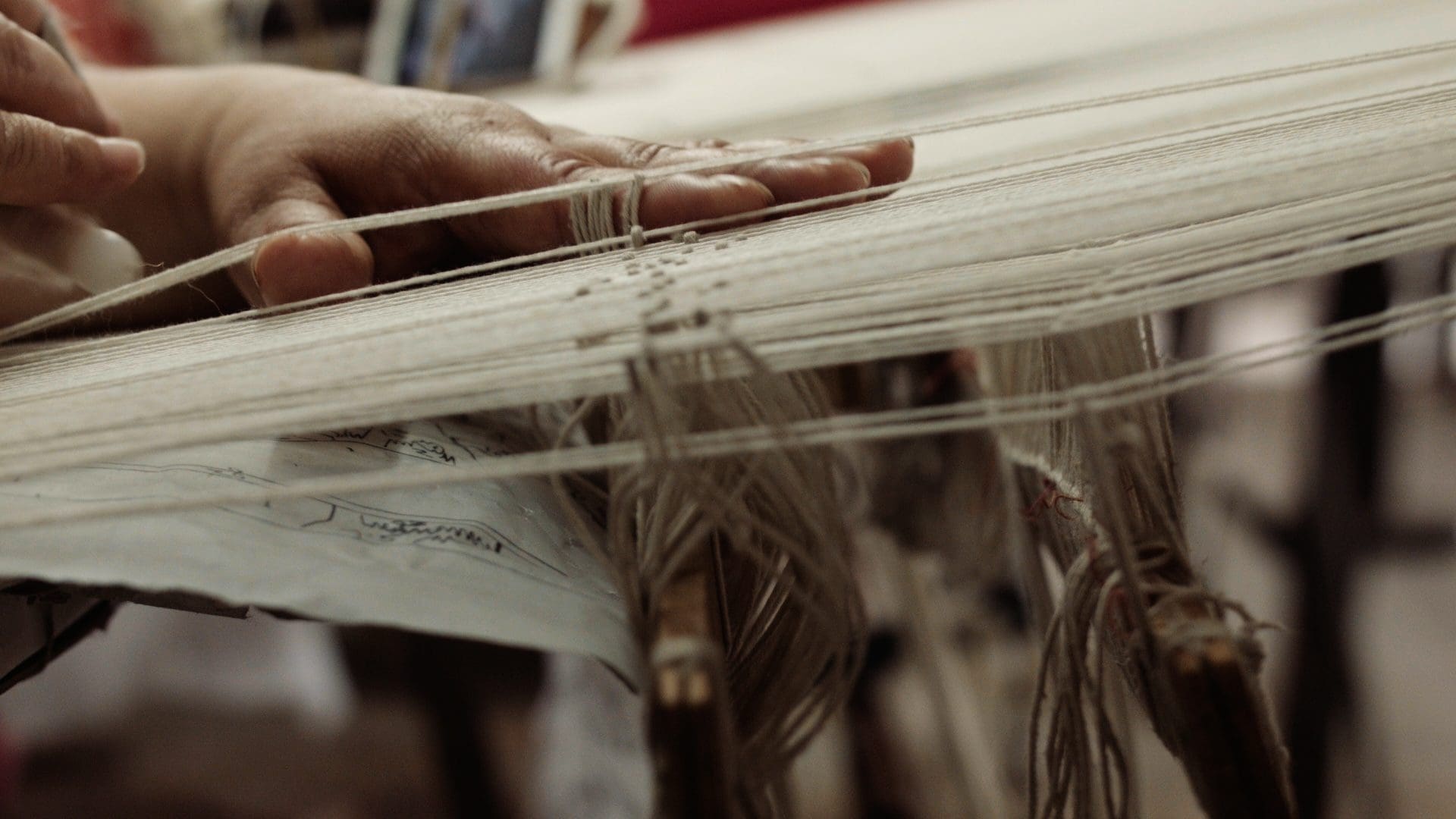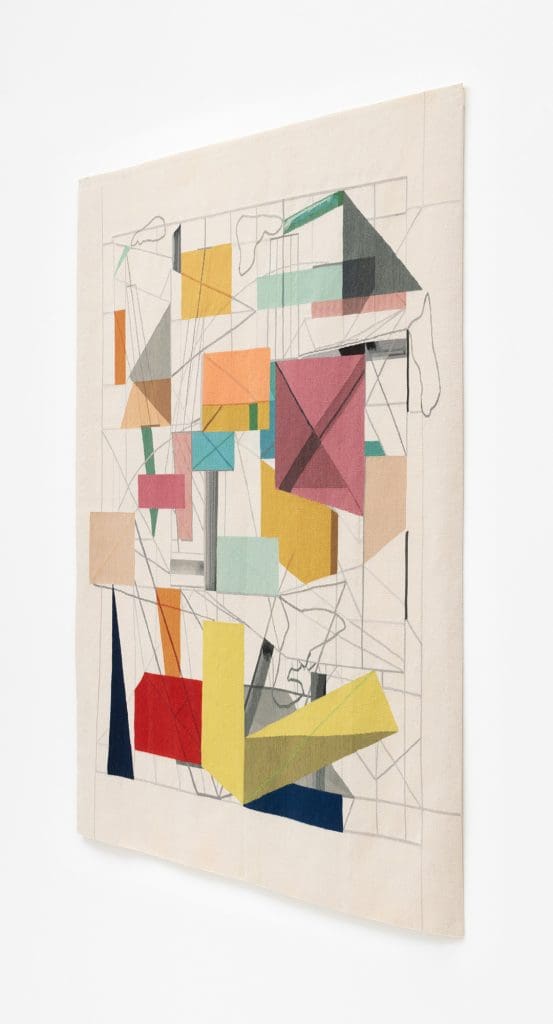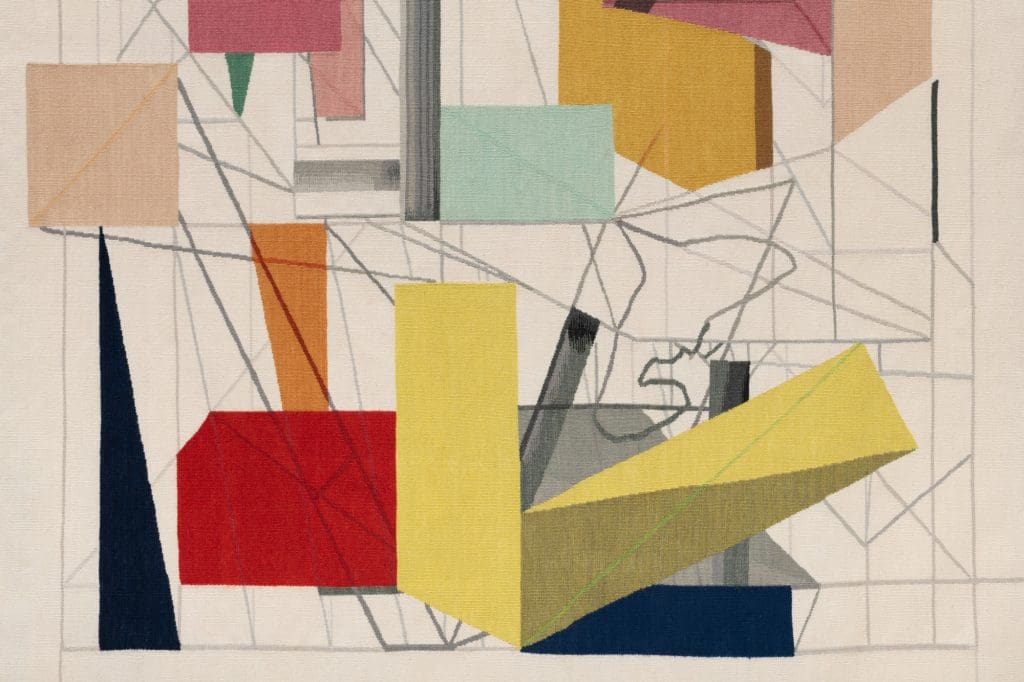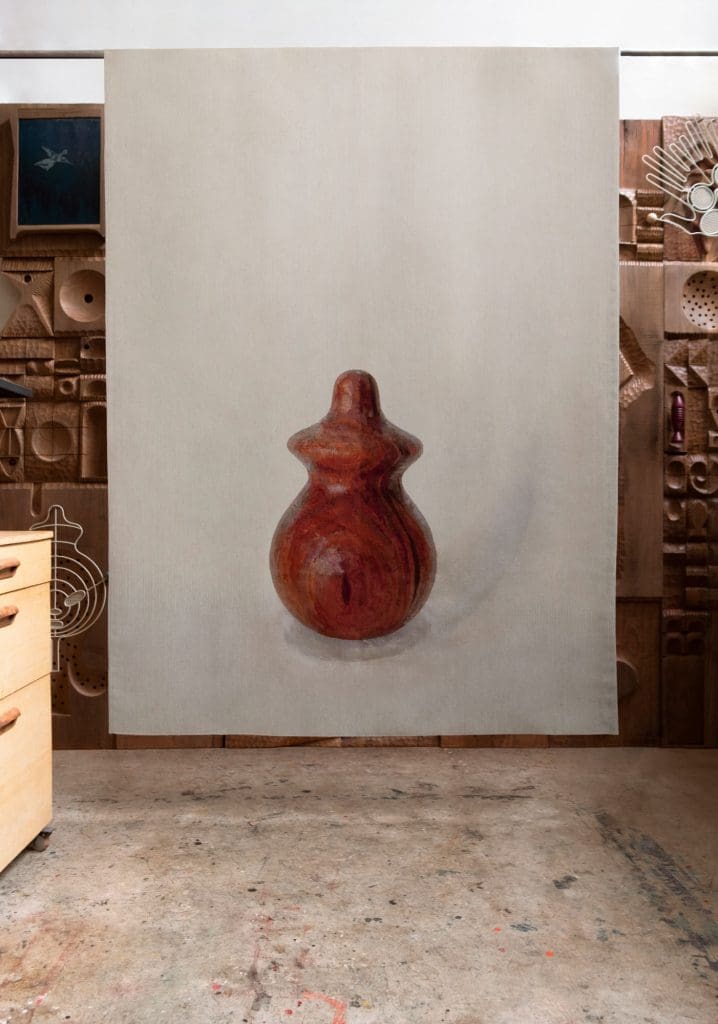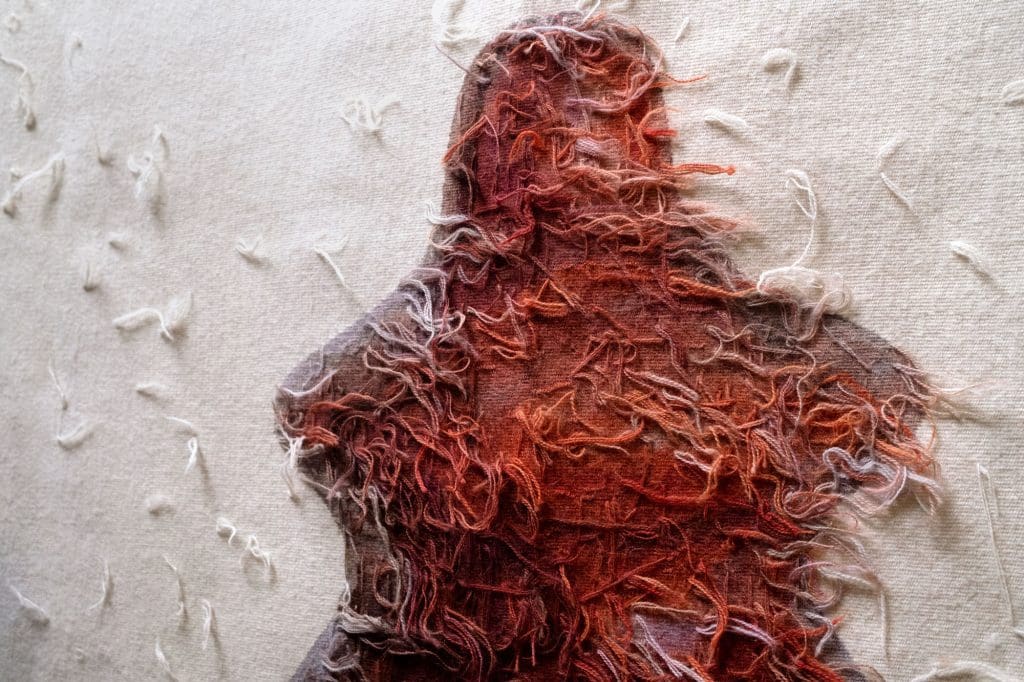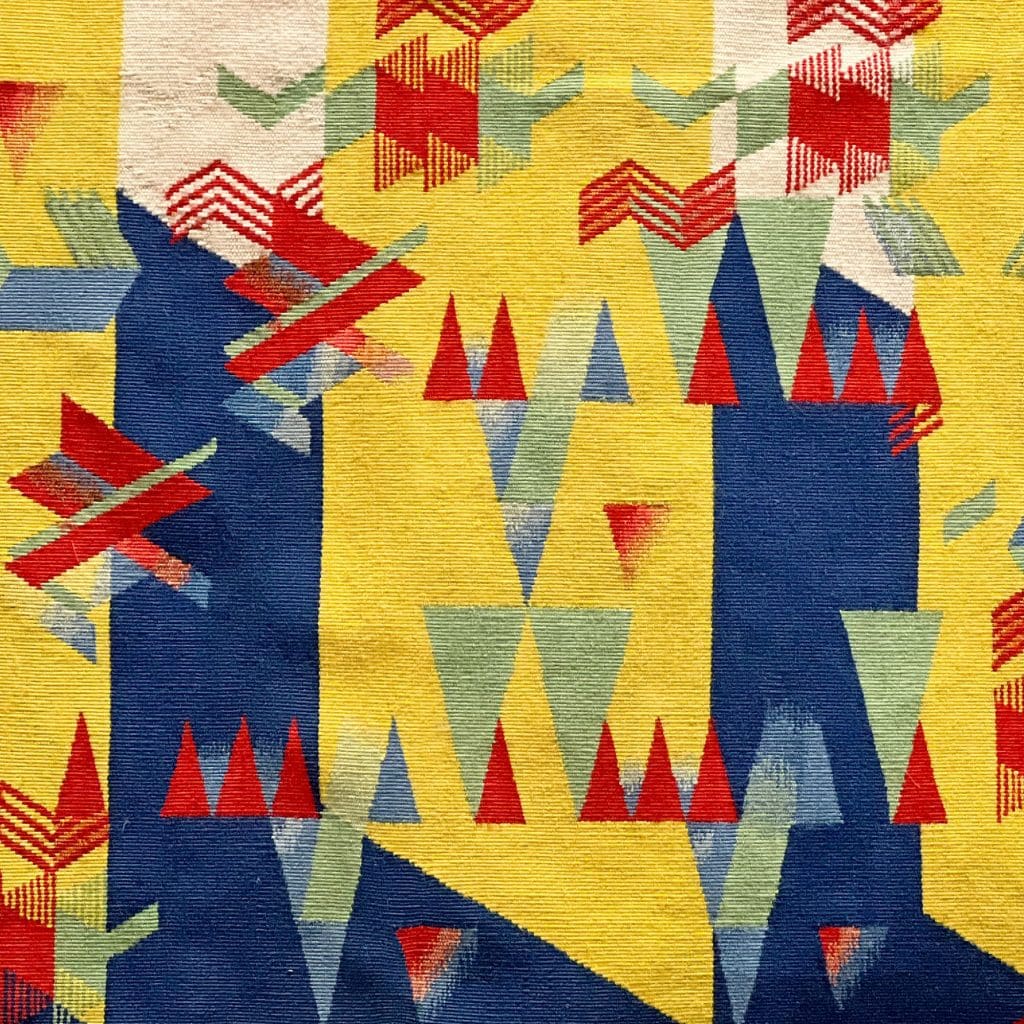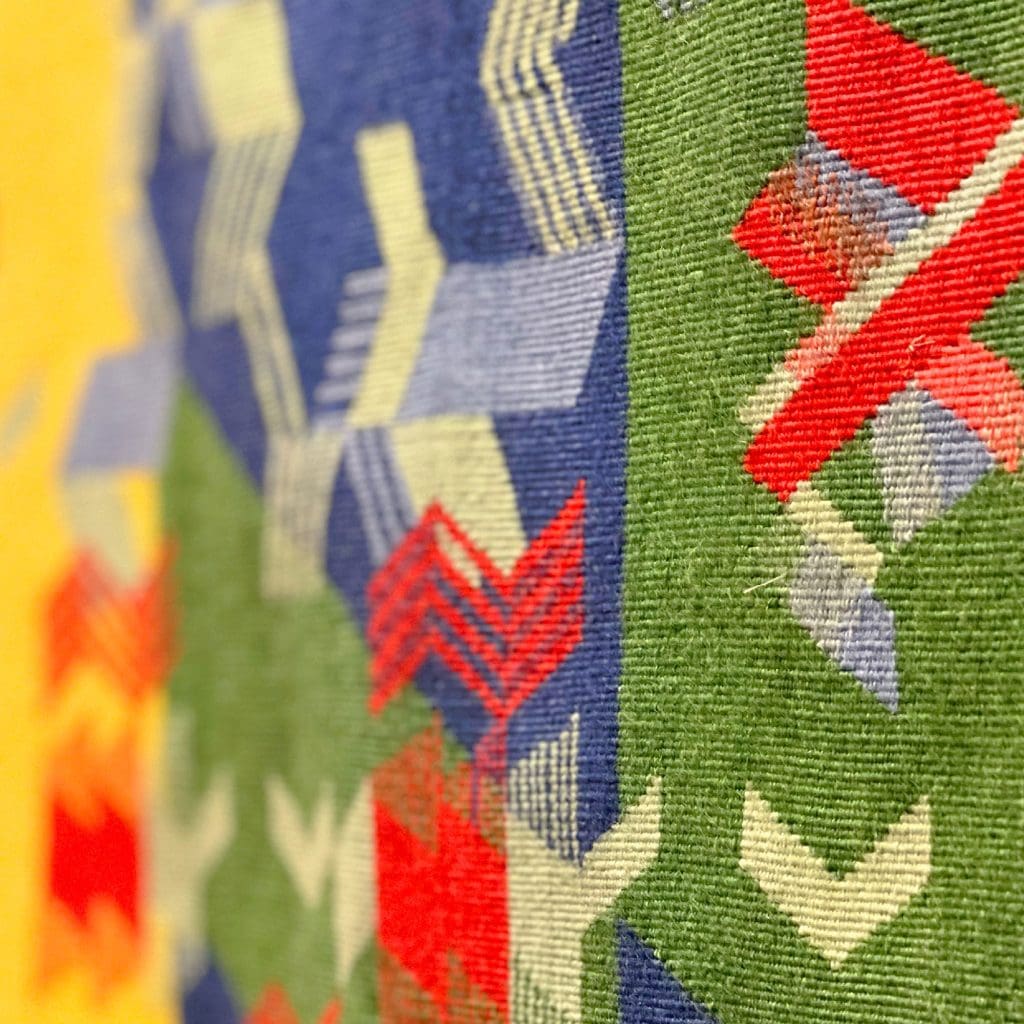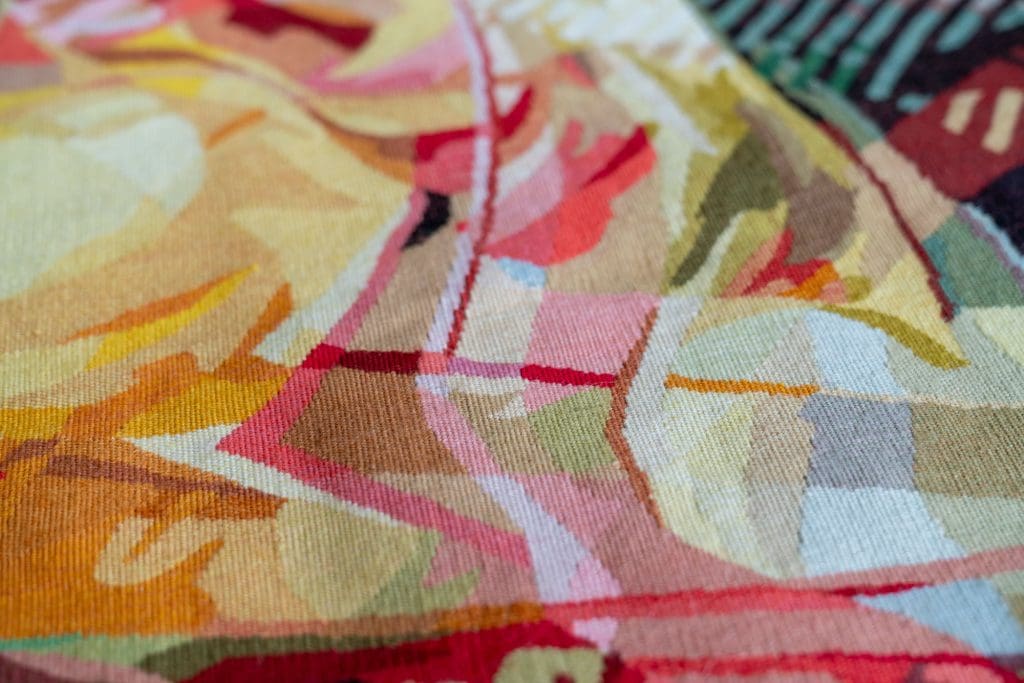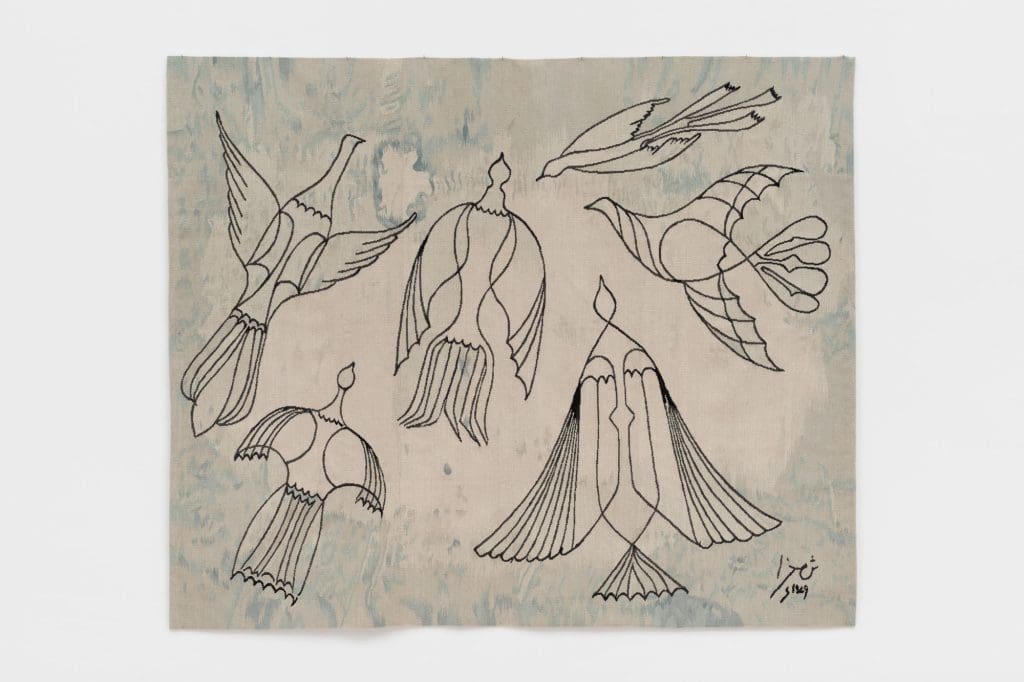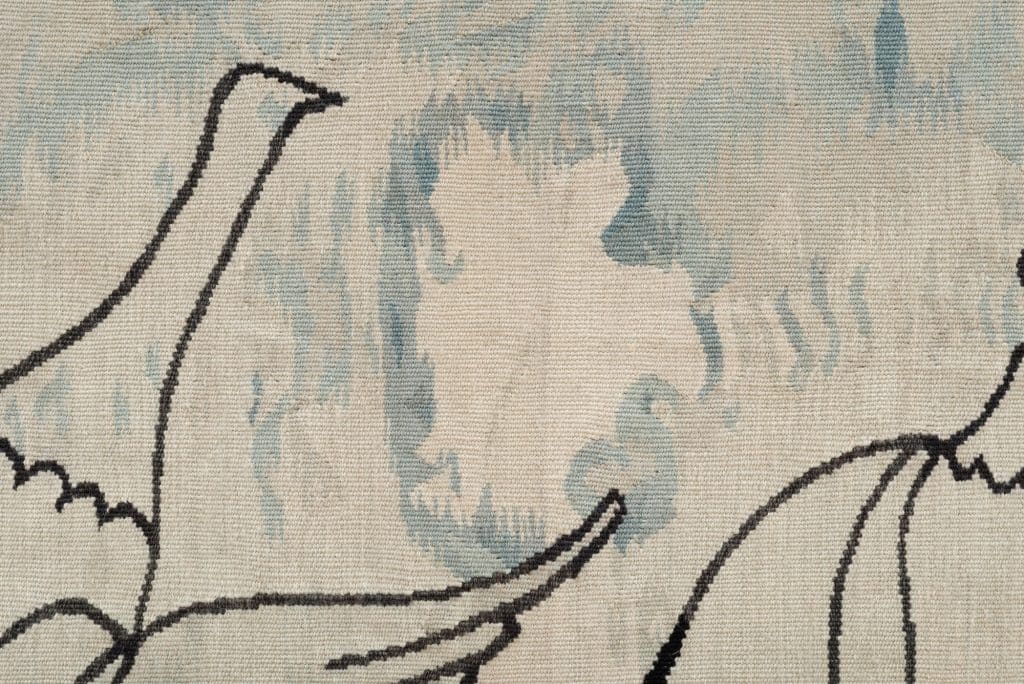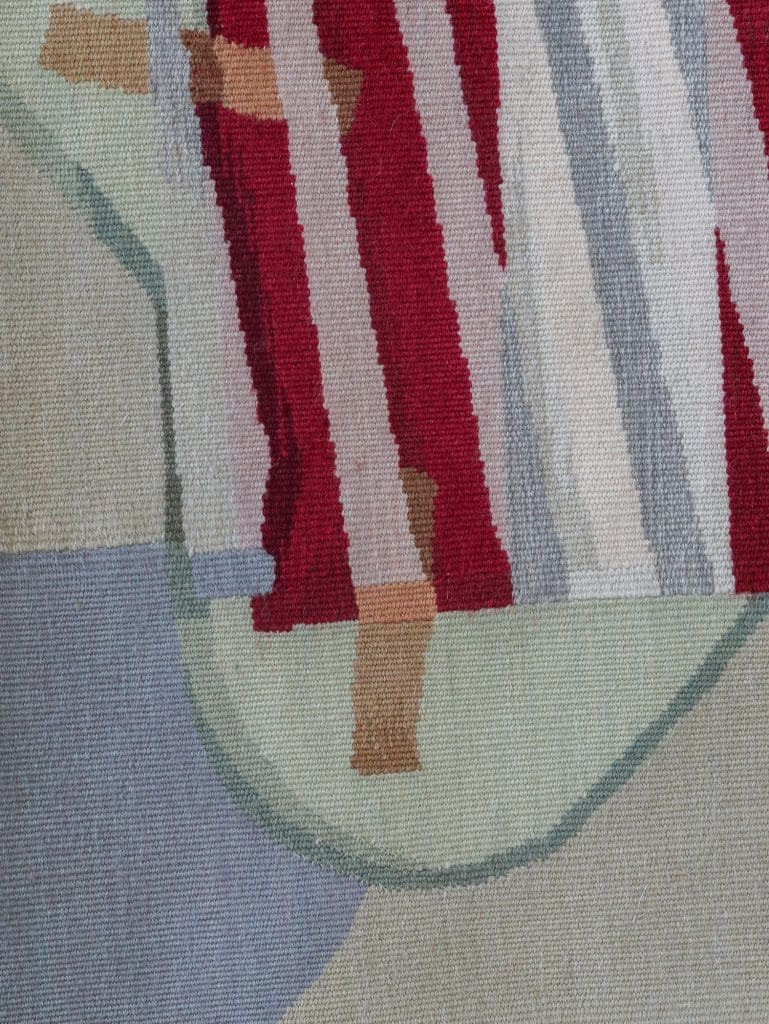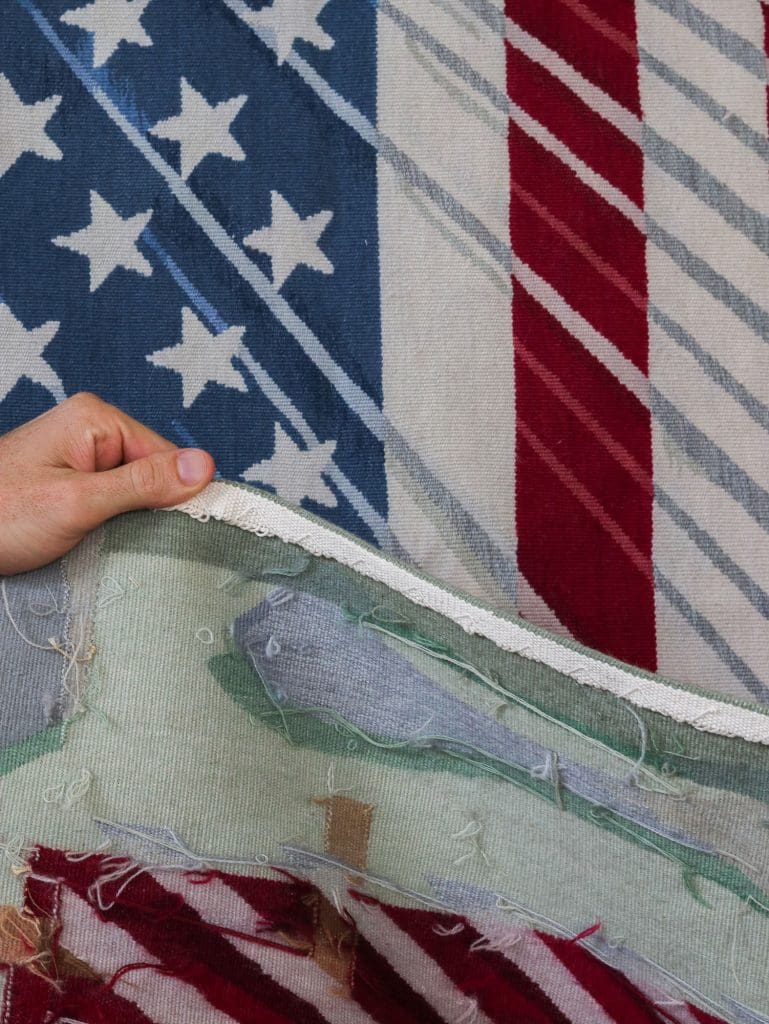Over the last years, we have expanded our work in the field of Aubusson style tapestry, connecting leading contemporary artists with the best artisans in the world currently working in this medium.
The Aubusson technique has its roots in 15th century Aubusson, France. It was developed in the tapestry workshops of this region, which became renowned for producing exceptional quality and beautiful carpets. This craftsmanship led to its recognition as a leading tapestry tradition in Europe and its influence on royal courts, including the court of King Louis XIV.
The technique is notable for the incredible detail that can be achieved using a type of tent stitch, whereby the thread is worked on canvas over two or more warp/weft threads, and the length of the stitch is twice its width. The horizontal threads are tamped down, so they are closely packed together, effectively concealing the vertical threads from view, achieving an almost photographic quality.
The process of making an Aubusson style tapestry involves several painstaking steps that must be done with great care and consideration:
– Carefully decide the color palette of the desired artwork with custom dyed wool.
– Dye the weft with the precisely chosen tones.
– Warp the dyed weft into a “bobbin” or “broche”, this utensil is use it as a needle to hold the weft and guide it between the warp threads.
– Trace the pattern into the looms or place it under to follow the artwork.
– To see the front of the tapestry reference you have to look at it through a perfectly aligned mirror.
– Finishing touches. Remove any excess and trim the details.
It takes about approximately 3 months to weave each square meter, with many of our own designs taking the best part of six months to complete.
Compendium Tree by Andrew BicK
An Aubusson tapestry created by British artist Andrew Bick in collaboration with Hales Gallery. The piece features two motifs: a grid sequence and an image depicting the Fibonacci numbers. The technique enabled our skilled weavers to meticulously recreate intricate details, replicating the grain and texture reminiscent of watercolor paintings.
The Dynamo and The Venus by Edgar Orlaineta
In our collaboration with Edgar Orlaineta, the artist chose the Aubusson technique to translate his sculptures into tapestries because of its precision and similitude. Inspired by a chapter in The Education of Henry Adams by Henry Adams, the pieces explore form and how we relate to objects in modern times. The artist turned The Dynamo into a male figure and The Venus into an abstract, primitive shape of a woman that represents fertility.
5xWP by Bas van Beek
A new tapestry work designed by Rotterdam-based designer and artist Bas van Beek, commissioned by the Wolfsonian Museum in Miami Beach. The tapestry, made from New Zealand wool and cotton weft in Aubusson style technique, is drawn from Wilhelm Poetter’s modernist textile patterns.
La Caída de Artemisa by Omar Rodriguez-Graham
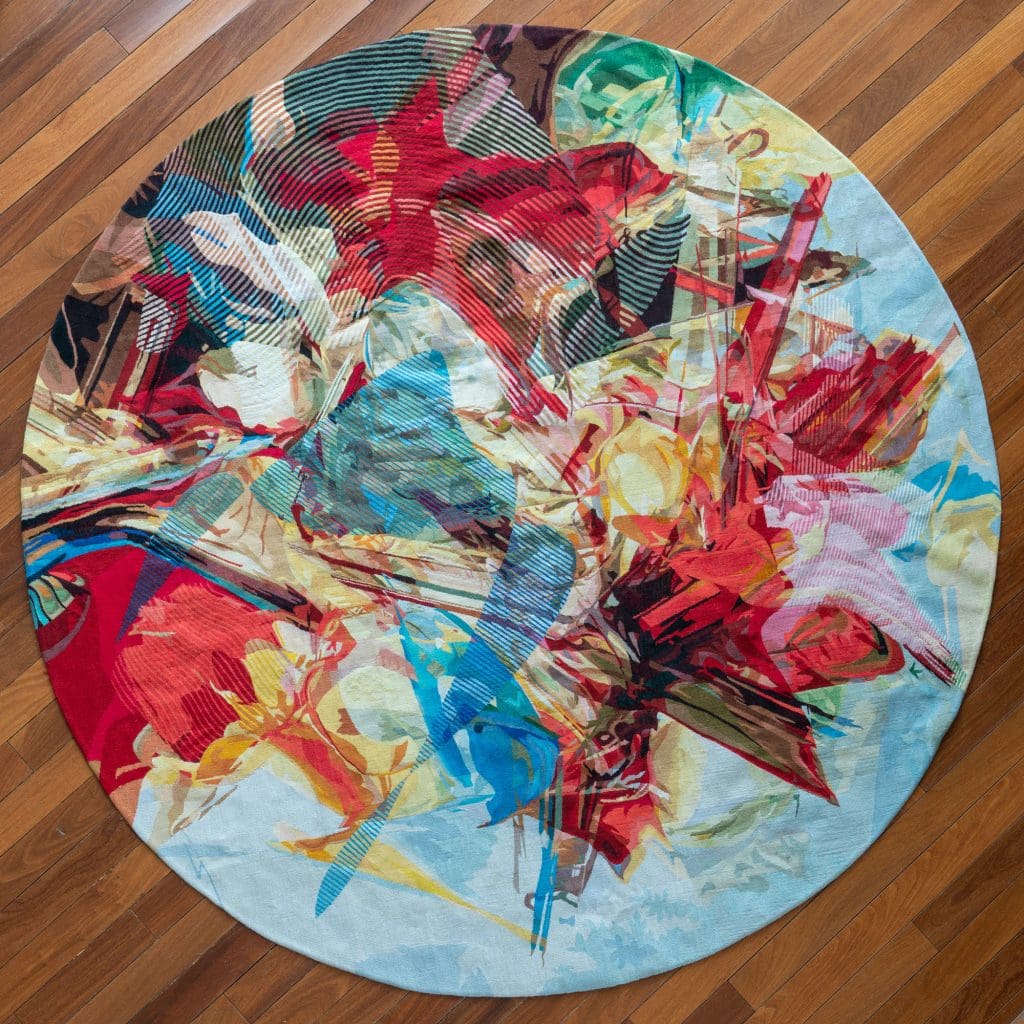
Our collaboration with Omar Rodriguez-Graham is a circular tapestry created using the classical Aubusson technique. This piece references a work by the Baroque painter Gianbattista Tiepolo. The result consists of four fragments of negative space, showcasing vibrant colors, expressive forms, and intricate detailing that come together to form a captivating design. “Working with the Odabashian team was very easy and we achieved a spectacular result together.” – Omar Rodriguez-Graham.
Birds In Flight by Anwar Jalal Shemza
A rug based on a lost drawing by artist Anwar Jalal Shemza. This pigeon motif is executed in an elegant, sophisticated line, made possible by the meticulous detail Aubusson style tapestry technique.
Gringo Voodoo by Ray Smith
American-Mexican artist Ray Smith reflects on mythology, power, and the questioning of truth in modern America through this highly detailed Aubusson style tapestry. This intricately crafted piece serves as a platform for the artist to explore collaboration with fellow artists, particularly the weavers. Smith finds himself captivated by the rhythmic nature of their craft and the seemingly autonomous narratives that emerge from their physical expressions.
“A tapestry of this quality is almost like a computerized image. Woven carpets probably are the first computerized images in some way.” – Ray Smith.

